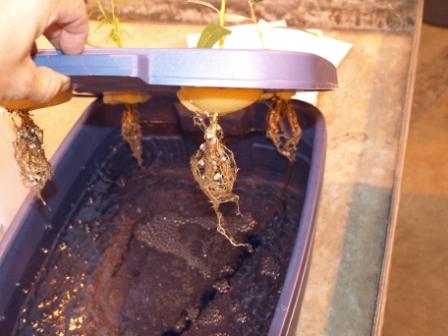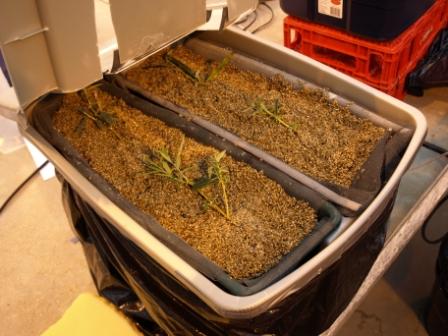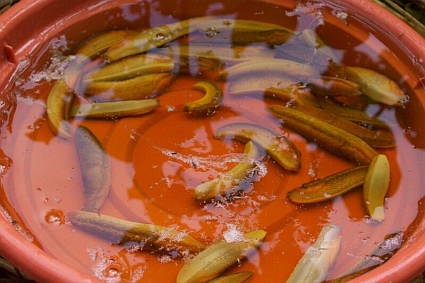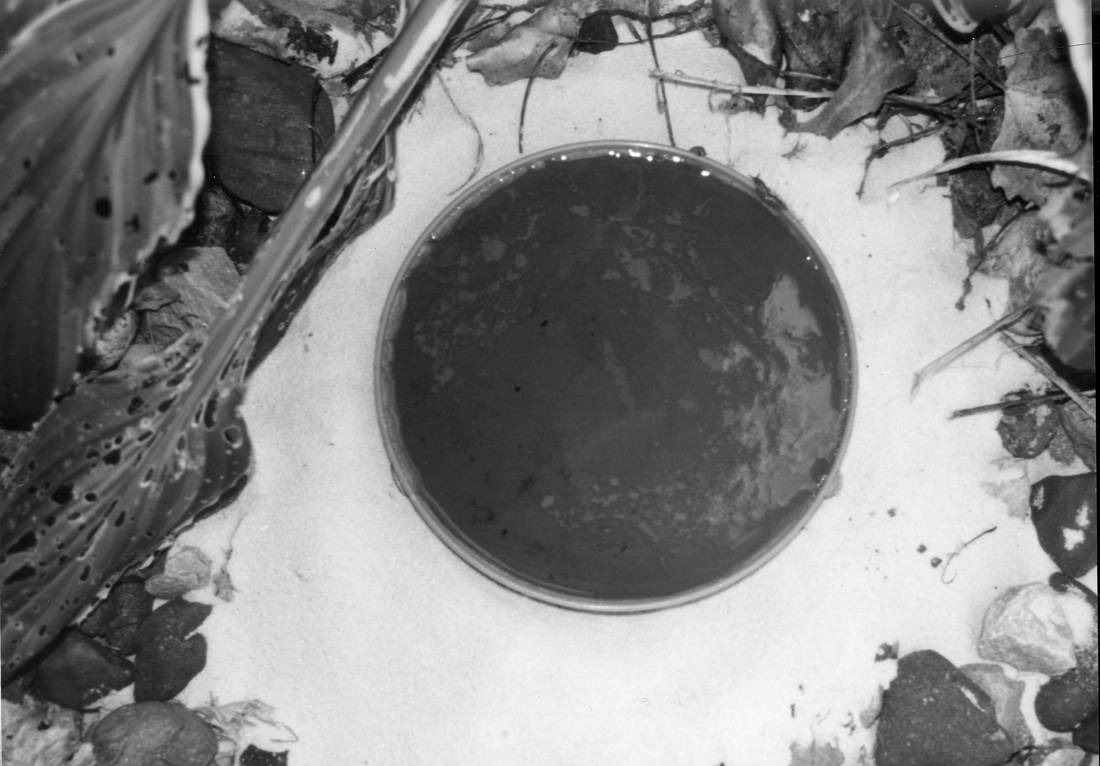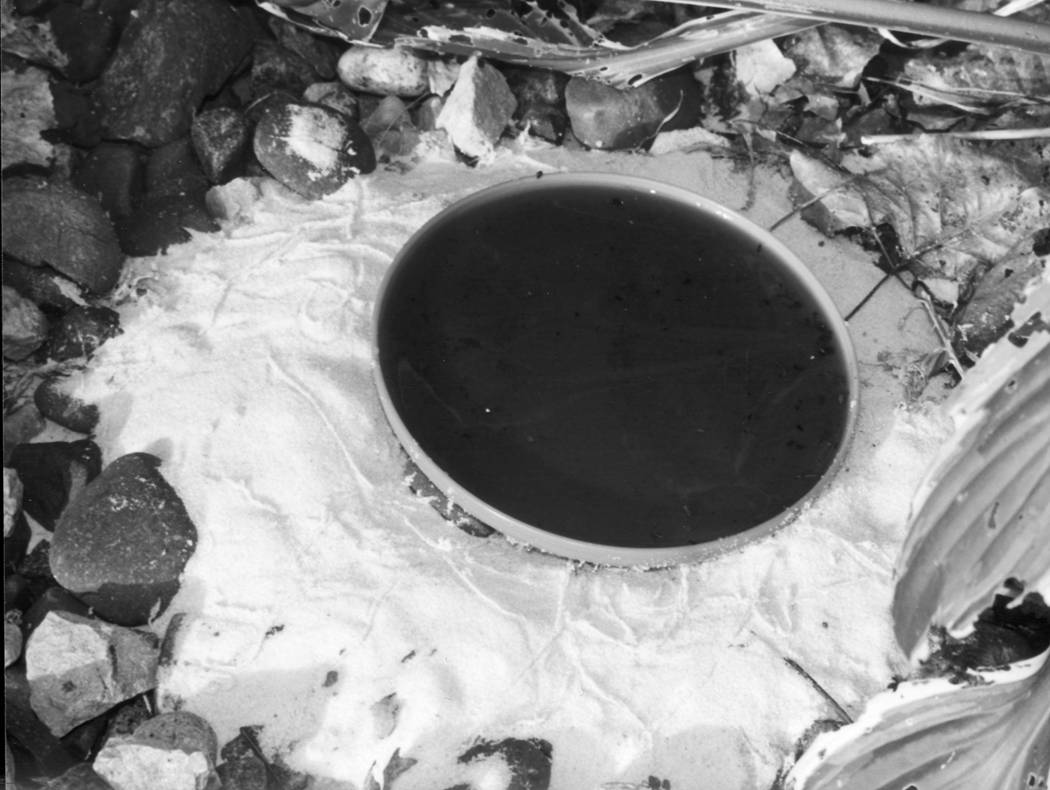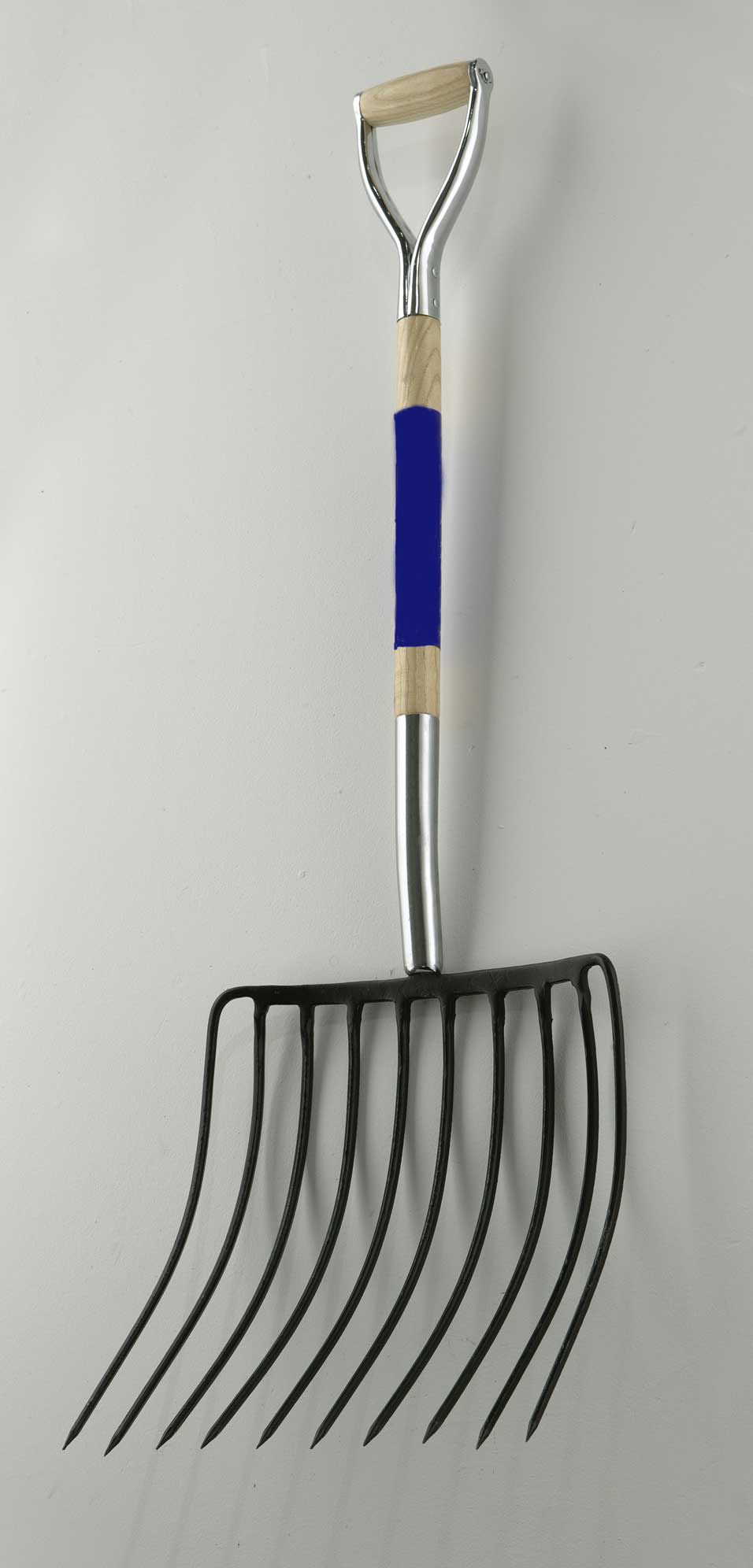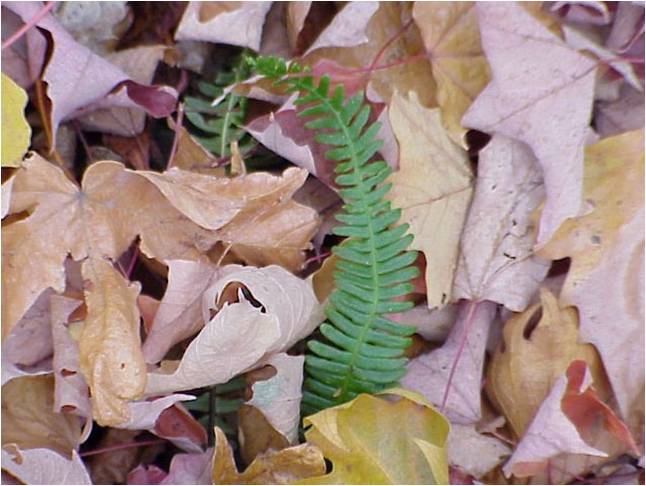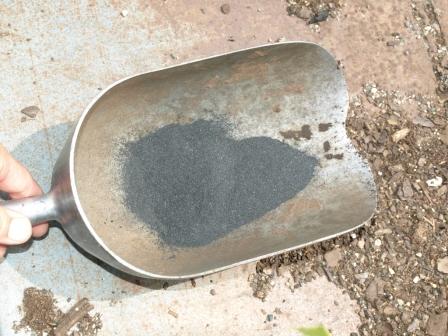I should add “in absentia”… Played hooky from the convention center Thursday afternoon for a trip out to Plant Delights Nursery, Inc. with my former grad student and plant geek extraordinaire, Paul Westervelt. We followed proper Plant Delights etiquette: you make an appointment to visit at a time other than open house or tour. I teach herbaceous landscape plant i.d. as well as ornamental plant production courses, and take every opportunity to bring back images of new technology, growing systems, and great plants to my students. Since Paul is a now a grower for a large nursery, he’s also keen to learn anything he can.
We certainly didn’t go to shop [“She lies!”].

Tony amongst the yucca pups.
Even though we arrived a good hour before our appointed time (we were…excited), and even though a throng of 500+ salivating conference attendees were to besiege him and his staff the next day, owner Tony Avent very kindly made time to give Paul and me a personal tour of the back 40: where the real action is. Tony patiently answered our gazillion questions and filled our pockets with seeds. The propagation houses and trial areas have more amazing plants than you can shake a stick at. Many are one-of-kind hybrids or species. The vast Colocasia trials actually gave me goose bumps – alas, no photos were allowed. A walk through the display and trial gardens (Juniper Level Botanic Garden), resulted in several trips back through the retail houses to find that OMG! plant we just saw. We topped our visit off with the purchase of way too many yummy plants. Delightful, indeed!

The trial and breeding collection of Epimedium species and hybrids. Who knew there were that many???
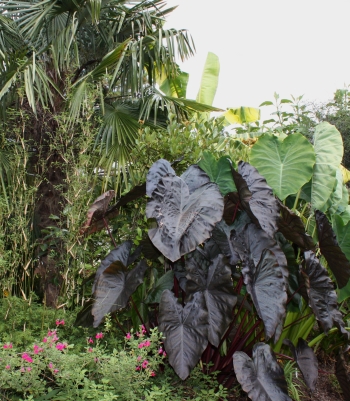
North Carolina or Hawaii?? That’s Colocasia ‘Diamond Head’.
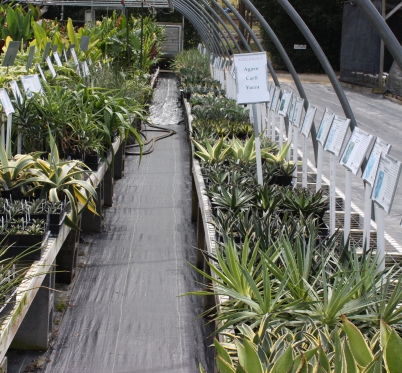
I’m in an Agave/Yucca phase and this isn’t helping a bit.

Paul demonstrates “The Joy of Plant Shopping”.

